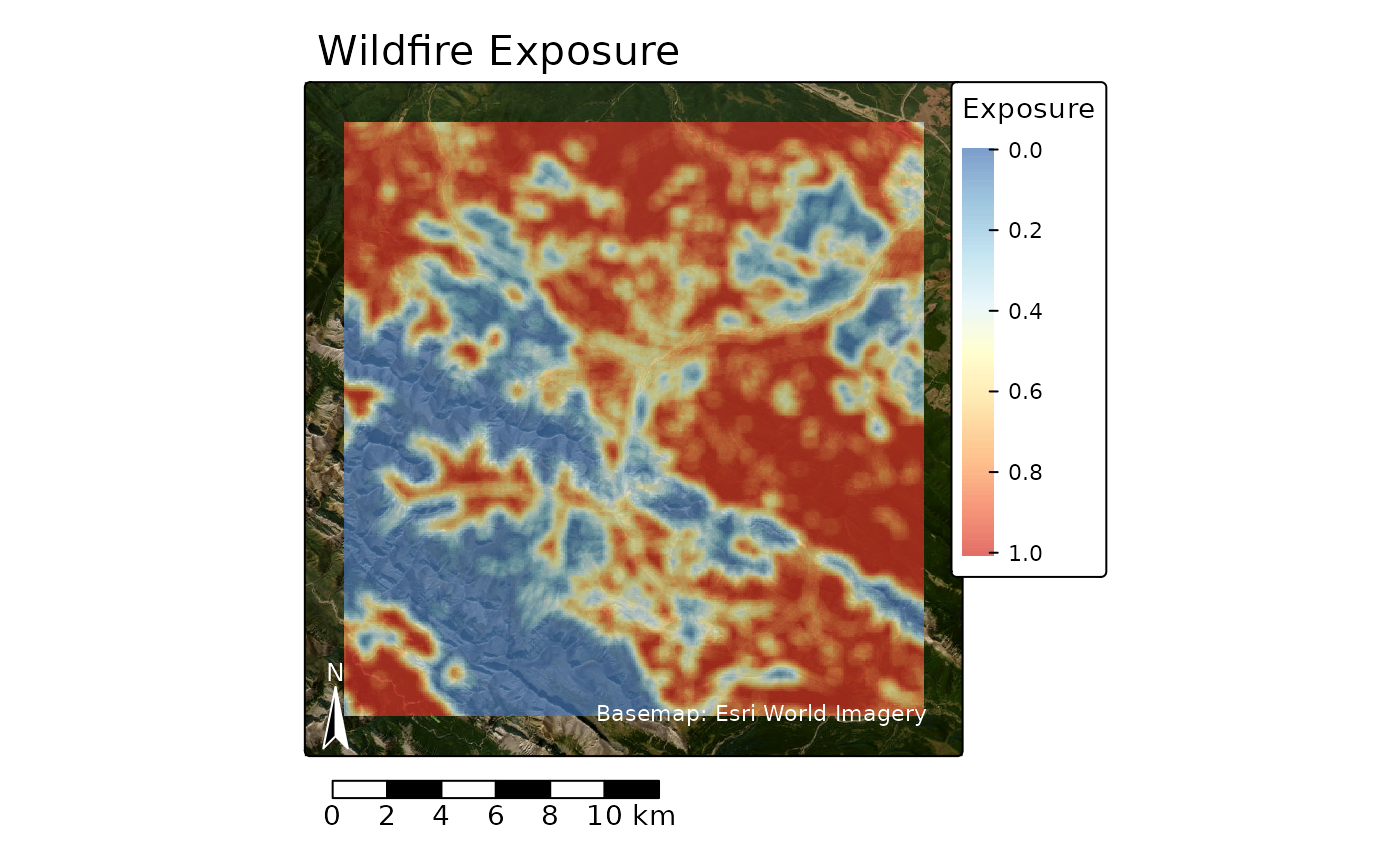fire_exp_map() produces a map with sensible defaults that can
be customized.
Arguments
- exposure
SpatRaster (e.g. from
fire_exp())- aoi
(Optional) SpatVector of an area of interest to mask exposure
- classify
character, either
"local","landscape", or"custom", to specify classification scheme to use. The default is"local". If set to"custom": the parameterclass_breaksmust be used.- class_breaks
vector of numeric values between 0-1 of the upper limits of each custom class. Ignored unless
classify = "custom". See details.- title
(Optional) String. A custom title for the plot. The default is
"Wildfire exposure"
Details
This function returns a map with basic cartographic elements and a standardized colour scale. .
The plot is returned as a tmap object which can be further customized using
tmap commands or exported/saved to multiple image file formats. See
tmap::tmap_save() for export details.
This function visualizes the outputs from fire_exp().
The map can be returned with a continuous scale or can be classified.
Classes can be chosen from the pre-set "local" and "landscape" options,
or customized. To use a custom classification scheme, it should be defined
with a list of numeric vectors defining the upper limits of the breaks. A
Nil class is added automatically for exposure values of exactly zero.
Local classification breaks are predefined as c(0.15, 0.3, 0.45, 1):
Nil (0)
0 - 0.15
0.15 - 0.3
0.3 - 0.45
0.45 - 1
Landscape classification breaks are predefined as c(0.2, 0.4, 0.6, 0.8, 1):
Nil (0)
0 - 0.2
0.2 - 0.4
0.4 - 0.6
0.6 - 0.8
0.8 - 1
Spatial reference
This function dynamically pulls map tiles for a base map. The crs is set
automatically. See tmap::tm_crs() for details.
Examples
# read example hazard data
hazard_file_path <- "extdata/hazard.tif"
hazard <- terra::rast(system.file(hazard_file_path, package = "fireexposuR"))
# compute exposure
exposure <- fire_exp(hazard)
fire_exp_map(exposure)

